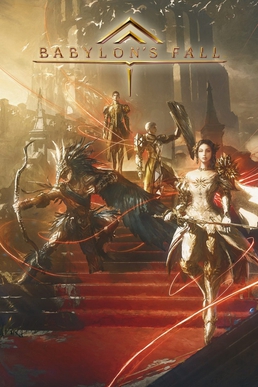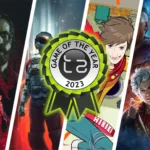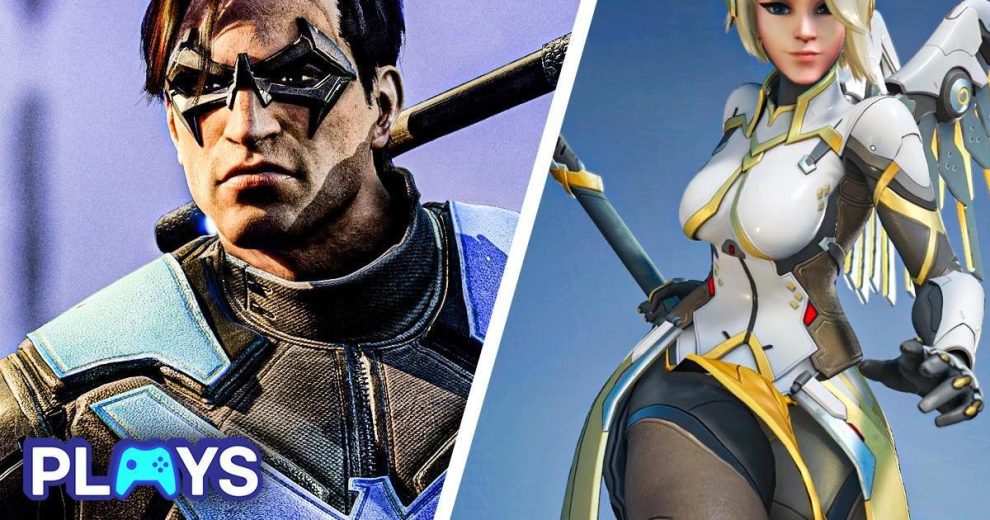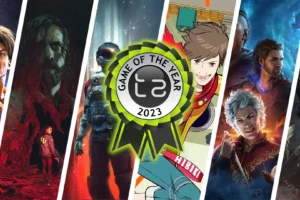2022 was a year of gaming highs and lows, with breathtaking successes like Elden Ring and God of War: Ragnarok sharing the spotlight with some undeniably disappointing titles. But what makes a game a letdown? Let’s dissect the anatomy of disappointment, examining some major offenders of 2022 and dissecting the factors that made them fall short:
Broken Promises
Sometimes, the pre-release hype can inflate expectations to unrealistic levels. Games like Babylon’s Fall and Gotham Knights suffered the weight of their own grand promises, failing to deliver on the ambitious visions they painted.
Overhyped Hype Trains

The reveal trailer for Babylon’s Fall painted it as an epic live service fantasy RPG by acclaimed developers Platinum Games. This pedigree, paired with early demonstrations of frenetic hack-and-slash gameplay against massive beasts and armies, primed fans to expect an exhilarating adventure.
But upon release, critics and players alike deemed the final product a shadow of what was promised. Despite its beautiful visual aesthetic, Babylon’s Fall suffered from repetitive mission design, shallow loot progression, and not nearly enough content to warrant its live service ambitions.
For a studio renowned for stylish, meaty combat systems and progression, Babylon’s Fall felt distinctly hollow, a far cry from its exciting potential. This disparity between expectations and reality made it one of 2022’s biggest disappointments.
Technical Woes
Launch disasters like Battlefield 2042 and Pokemon Scarlet & Violet tarnished their potential with buggy performance, graphical glitches, and constant crashes, shattering the excitement with frustrating technical roadblocks.

The latest entries in the beloved monster-catching RPG franchise somehow managed to ship in an almost unfinished state. Pokemon Scarlet & Violet suffered from poorly optimized performance, leading to frame rate drops and constant pop-in of objects and textures.
But worse were the sheer number of glitches—clipped animations, Pokémon frozen in T-poses, players falling through the map, soft locks during story sequences. For a massive franchise entry celebrating new features like open world freedom, these issues dragged the experience down tremendously.
No player wants to feel like they paid full price for an unfinished product. Despite its positives, Scarlet and Violet’s technical shortcomings prevented it from reaching its full potential.
Unfulfilled Design Choices
Rebooting beloved franchises can be tricky. Saints Row‘s reboot alienated some fans with its tonal shift, while Diablo Immortal‘s mobile-centric design and monetization practices drew ire from the series’ core audience.
The irreverent open world mayhem of past Saints Row titles gave way to a mundane, relatively grounded reboot. Gone was the signature flavor of over-the-top absurdity and tongue-in-cheek humor that defined franchise.
In their place came uninspiring turf war narratives starring bland archetype characters devoid of the series’ heart. Combined with generic city aesthetics and missions, Volition’s choices robbed the reboot of what made Saints Row special. What could have celebrated the franchise’s roots ended up estranging longtime fans.
Lost Potential
Games like CrossfireX aimed for competitive greatness but stumbled with clunky controls and questionable design choices, failing to capture the essence of their genre’s best offerings.
Misdirected Ambitions
The pedigree seemed perfect – acclaimed FPS masters Smilegate teaming with Remedy Entertainment of Max Payne and Quantum Break fame to craft an explosive competitive shooter. CrossfireX even boasted an ambitious single-player campaign directed by Remedy.
But the final product crumpled under the weight of expectations. Despite Smilegate’s FPS expertise in Asia, CrossfireX’s console controls and mechanics felt dated and imprecise compared to offerings from genre titans like Call of Duty or Halo. Remedy’s cinematic story mode also failed to impress, amounting to little more than a trite, cliché-riddled slog.
For a game marketed as the next big competitive shooter, CrossfireX missed the mark by a mile. Unrefined mechanics and average replay value made for one of 2022’s most misdirected games.
Narrative Misses
A compelling story can elevate even the most basic gameplay. Titles like Vampire: The Masquerade – Swansong and Tom Clancy’s Rainbow Six Extraction struggled to engage players with their narratives, leaving them feeling uninspired and disconnected.
 Boasting the coveted World of Darkness IP, the narrative adventure Vampire: The Masquerade – Swansong had intriguing vampire political intrigue potential. Playing as three vampires attempting to unravel a mysterious conspiracy could have delivered a gripping, choice-driven saga.
Boasting the coveted World of Darkness IP, the narrative adventure Vampire: The Masquerade – Swansong had intriguing vampire political intrigue potential. Playing as three vampires attempting to unravel a mysterious conspiracy could have delivered a gripping, choice-driven saga.
But stilted dialogue and limited consequence to player choices sapped the intrigue quickly. Instead of diving deep into vampire lore and machinations, Swansong played it safe, resulting in a story lacking the subtle intricacies or meaningful branches such a narrative promised.
Lack of Innovation
In a sea of sequels and reboots, standing out requires fresh ideas. Games like Forspoken and Evil West, while visually stunning, fell short in offering truly groundbreaking gameplay or mechanics, feeling derivative and uninspired.
With a vibrant fantasy realm to explore and magic abilities fueling free-flowing parkour mobility, Square Enix’s action-RPG Forspoken seemed ripe for innovation. The narrative also hinted at dark undertones contrasting with eye-popping color.
Yet for all its splendor, Forspoken’s core combat and progression stuck rigidly close to predictable action tropes. Formulas for upgrading abilities or tackling enemy encounters failed to do something unexpected, instead settling for serviceable but unremarkable mechanics carried solely by visual spectacle.
After years of development and hype, Forspoken’s play-it-safe design was a resounding disappointment.
Lessons Learned
The sting of disappointment serves as a valuable lesson for the industry. It reminds us that hype needs to be grounded in reality, technical stability is paramount, and design choices should cater to the target audience. Players demand innovation, engaging narratives, and polished experiences, and studios must strive to deliver.
Managing Hype
Promising paradigm-shifting experiences sets unrealistic bars few can achieve. Be transparent about actual content quantity, variety and mechanics during development to align player expectations.
Prioritizing Performance
Rushed products erode trust. Rigorously test for stability issues and provide review copies early for constructive feedback. Frame rate, textures and bugs can make or break reception.
Understanding Your Audience
Franchise reboot design choices should carefully balance nostalgic nods with modernization based on fan feedback and market trends. Drastic divergence without strong vision risks alienating core fans.
Moving Forward
While some 2022 titles missed the mark, they offered valuable insights into areas for improvement. The coming year promises new adventures, and hopefully, the lessons learned from past disappointments will pave the way for a future where games consistently meet and exceed expectations, delivering experiences that fill us with awe, not frustration.
















Add Comment